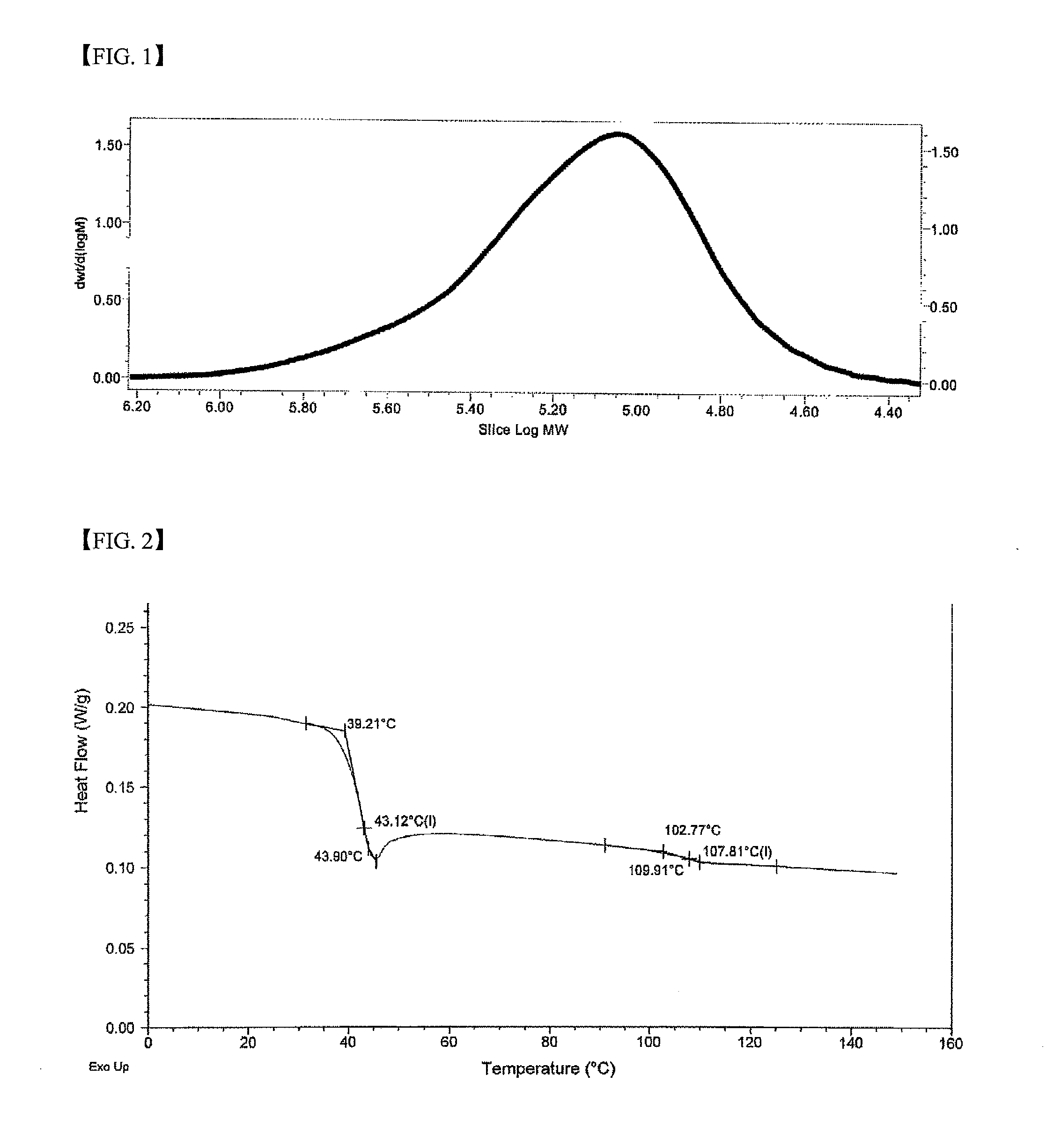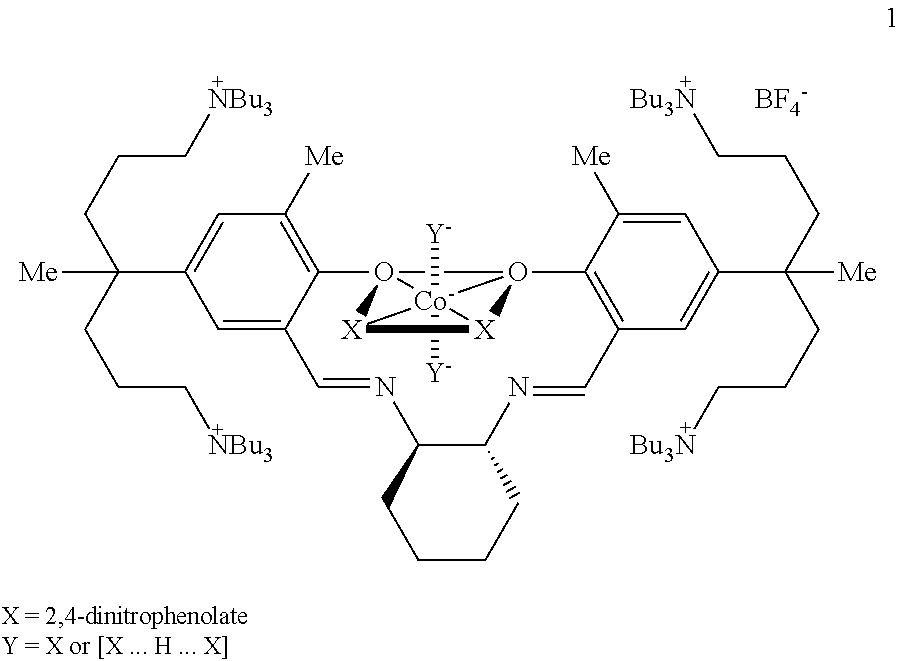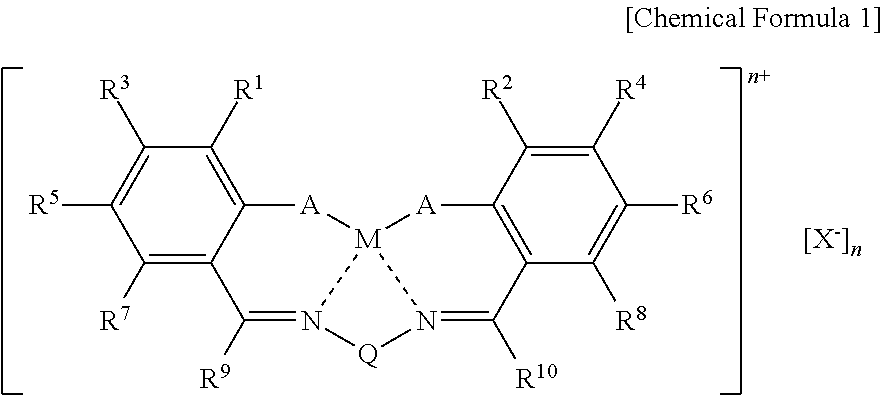Block and Graft Copolymers of Poly(Alkylene Carbonate) and Various Polymers
- Summary
- Abstract
- Description
- Claims
- Application Information
AI Technical Summary
Benefits of technology
Problems solved by technology
Method used
Image
Examples
example 1
Copolymerization of Carbon Dioxide / Propylene Oxide in the Presence of Poly(Ethylene Glycol) and Separation of Catalyst
[0153]Copolymerization Reaction
[0154]The compound C prepared in the Preparation Example 1 (3.0 mg, monomer / catalyst=100,000) and propylene oxide (10.0 g, 172 mmol) was processed and introduced into a 50 mL bomb reactor and the reactor was assembled after introducing poly(ethylene glycol) (In Chemical Formula 4, R70 represents hydrogen, L represents —CH2CH2—, and Mn represents 8500-11500, 200 mg, [OH] / [Co]=22). After applying carbon dioxide gas pressure of 15 bar, the reactor was steeped into an oil bath with a previously controlled temperature of 73° C. and agitation was initiated. 35 minutes later, the internal temperature of the reactor reached at 70° C., and the pressure of the reactor started to be decrease. The polymerization reaction was carried out for 1 hour since the internal temperature of the reactor arrived at 70° C. and the reaction was initiated. After ...
example 2
Copolymerization of Carbon Dioxide / Propylene Oxide in the Presence of Poly(Propylene Glycol) and Separation of Catalyst
[0160]Polymerization was carried out according to the same method as Example 1 by introducing poly(propylene glycol) (In Chemical Formula 4, R70 represents hydrogen, L represents —CH2CH(CH3)—, Mn is 3500, 350 mg, [OH] / [Co]=112) instead of poly(ethylene glycol) and the catalyst was removed by the same method. Pure polymer (2.82 g) was obtained and it corresponded to a TON of 13600. A molecular weight (Mn) measured by GPC using the polystyrene standard was 22,800 and a molecular weight distribution (Mw / Mn) was 1.27. A glass transition temperature (Tg) measured by DSC was 36° C. In 1H NMR spectrum, polypropylene glycol) signal appeared at 3.55, 3.42, and 1.56 ppm.
example 3
Copolymerization of Carbon Dioxide / Propylene Oxide Using Poly(Tetrahydrofuran) and Separation of Catalyst
[0161]Polymerization was carried out according to the same method as Example 1 by introducing poly(tetrahydrofuran) (In Chemical Formula 4, R70 represents hydrogen, L represents —CH2CH2CH2CH2—, Mn represents 2900, 260 mg, and [OH] / [Co]=100) instead of poly(ethylene glycol) and the catalyst was removed by the same method. Pure polymer (3.13 g) was obtained with a TON of 15700. A molecular weight (Mn) measured by GPC using the polystyrene standard was 33,800 and a molecular weight distribution (Mw / Mn) was 1.13. In the GPC curve, the chain grown from the introduced polymer chain largely appeared at 28100. A glass transition temperature (Tg) measured by DSC was 37° C. In 1H NMR spectrum, an introduced poly(tetrahydrofuran) signal appeared at 3.42, and 1.64 ppm.
PUM
| Property | Measurement | Unit |
|---|---|---|
| Chemical formula | aaaaa | aaaaa |
Abstract
Description
Claims
Application Information
 Login to View More
Login to View More - R&D
- Intellectual Property
- Life Sciences
- Materials
- Tech Scout
- Unparalleled Data Quality
- Higher Quality Content
- 60% Fewer Hallucinations
Browse by: Latest US Patents, China's latest patents, Technical Efficacy Thesaurus, Application Domain, Technology Topic, Popular Technical Reports.
© 2025 PatSnap. All rights reserved.Legal|Privacy policy|Modern Slavery Act Transparency Statement|Sitemap|About US| Contact US: help@patsnap.com



